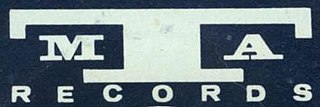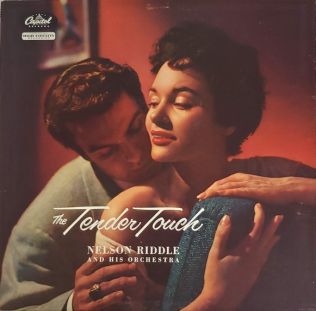Related Research Articles

Columbia Records is an American record label owned by Sony Music Entertainment, a subsidiary of Sony Music Group, the American division of multinational conglomerate Sony. Columbia is the oldest surviving brand name in the recorded sound business, and the second major company to produce records. From 1961 to 1991, its recordings were released outside North America under the name CBS Records to avoid confusion with EMI's Columbia Graphophone Company. Columbia is one of Sony Music's four flagship record labels: Epic Records, and former longtime rivals, RCA Records and Arista Records as the latter two were originally owned by BMG before its 2008 relaunch after Sony's acquisition alongside other BMG labels.

Capitol Records, LLC, and simply known as Capitol, is an American record label owned by Universal Music Group through its Capitol Music Group imprint. It was founded as the first West Coast-based record label of note in the United States in 1942 by Johnny Mercer, Buddy DeSylva, and Glenn E. Wallichs. Capitol was acquired by British music conglomerate EMI as its North American subsidiary in 1955. EMI was acquired by Universal Music Group in 2012, and was merged with the company a year later, making Capitol and the Capitol Music Group both distributed by UMG. The label's circular headquarters building is a recognized landmark of Hollywood, California.
RCA Records is an American record label owned by Sony Music Entertainment, a subsidiary of Sony Group Corporation.

The twelve-inch single is a type of vinyl gramophone record that has wider groove spacing and shorter playing time with a "single" or a few related sound tracks on each surface, compared to LPs which have several songs on each side. It is named for its 12-inch (300 mm) diameter that was intended for LPs. This technical adaptation allows for louder levels to be cut on the disc by the mastering engineer, which in turn gives a wider dynamic range, and thus better sound quality. This record type, which is claimed to have been accidentally discovered by Tom Moulton, is commonly used in disco and dance music genres, where DJs use them to play in clubs. They are played at either 33+1⁄3 or 45 rpm. The conventional 7-inch single usually holds three or four minutes of music at full volume. The 12-inch LP sacrifices volume for extended playing time.
Angel Records was a record label founded by EMI in 1953. It specialised in classical music, but included an occasional operetta or Broadway score. and one Peter Sellers comedy disc. The famous Recording Angel trademark was used by the Gramophone Company, EMI and its affiliated companies from 1898. The label has been inactive since 2006, when it dissolved and reassigned its active artists and catalogue while retaining its recent catalogue to sister labels EMI Classics, Virgin Classics and Manhattan Records and its musical theatre artists and catalogue to another sister label, Capitol Records.

20th Century Fox Records was a wholly owned subsidiary of film studio 20th Century Fox. The history of the label covers three distinct 20th Century Fox-related operations in the analog era, ranging chronologically from about 1938 to 1981.

Benjamin Bernard Selvin was an American musician, bandleader, and record producer. He was known as the Dean of Recorded Music.

Columbia House was an umbrella brand for Columbia Records' mail-order music clubs, the primary iteration of which was the Columbia Record Club, established in 1955. The Columbia House brand was introduced in the early 1970s by Columbia Records, and had a significant market presence in the 1970s, 1980s and early 1990s.

Milton "Shorty" Rogers was an American jazz musician, one of the principal creators of West Coast jazz. He played trumpet and flugelhorn and was in demand for his skills as an arranger.

Al Cohn was an American jazz saxophonist, arranger and composer. He came to prominence in the band of clarinetist Woody Herman and was known for his longtime musical partnership with fellow saxophonist Zoot Sims.

Ernest Aaron Freeman was an American pianist, organist, bandleader, and arranger. He was responsible for arranging many successful rhythm and blues and pop records from the 1950s to the 1970s.
On August 1, 1942, the American Federation of Musicians, at the instigation of union president James C. Petrillo, began a strike against the major American record companies because of disagreements over royalty payments. Beginning on midnight, July 31, 1942, no union musician could make commercial recordings for any commercial record company. That meant that a union musician was allowed to participate on radio programs and other kinds of musical entertainment, but not in a recording session. The 1942–1944 musicians' strike remains the longest strike in entertainment history.

The LP is an analog sound storage medium, specifically a phonograph record format characterized by: a speed of 33+1⁄3 rpm; a 12- or 10-inch diameter; use of the "microgroove" groove specification; and a vinyl composition disk. Introduced by Columbia Records in 1948, it was soon adopted as a new standard by the entire US record industry and, apart from a few relatively minor refinements and the important later addition of stereophonic sound in 1957, it remained the standard format for record albums during a period in popular music known as the album era. LP was originally a trademark of Columbia and competed against the smaller 7-inch sized "45" or "single" format by RCA Victor, eventually ending up on top. Today in the vinyl revival era, a large majority of records are based on the LP format and hence the LP name continues to be in use today to refer to new records.

Lawrence Joseph Elgart was an American jazz bandleader. With his brother Les, he recorded "Bandstand Boogie", the theme to the long-running dance show American Bandstand.
Alvin Stoller was an American jazz drummer. Though he seems to have been largely forgotten, he was held in high regard in the 1940s and 1950s. He was best known for playing drums on both Mitch Miller's recording of "The Yellow Rose of Texas" and Stan Freberg's parody of Miller's recording.
Hecht-Lancaster & Buzzell Music, Inc. was an American music publishing company founded by film producer Harold Hecht, his brother-in-law Loring Buzzell, and Hecht's business partner, actor/producer Burt Lancaster.
Concert Hall Society, Inc., was a New York City-based membership-subscription-oriented record production and distribution company founded in 1946 by Samuel Mulik Josefowitz (1921–2015) and David Josefowitz (1918–2015), brothers. The New York office was located at 250 West 57th Street in Manhattan. The Josefowitz's sold Concert Hall Society in 1956 to Crowell-Collier Publishing Company. The name Concert Hall Society was also one of several labels owned by the company.
Loring Bruce Buzzell was an American music publisher and record label executive. Together with film producer Harold Hecht and actor Burt Lancaster, he formed a series of music publishing imprints in the middle and late 1950s. His music publishing companies, Hecht-Lancaster & Buzzell Music, Calyork Music, Leigh Music and Colby Music, were responsible for copyrighting, publishing and promoting the soundtracks and theme songs from such notable films as Marty, Trapeze, The Kentuckian, Sweet Smell of Success, Separate Tables, Cry Tough, Take a Giant Step and The Unforgiven. Buzzell's companies also published "May You Always", the recordings of which by The McGuire Sisters for Coral Records and Joan Regan for HMV Records, became the top-selling records and the second-best-selling sheet music in the United States and the United Kingdom for 1959. Calyork Records and Maine Records were two independent record labels operated by Buzzell in partnership with Hecht and Lancaster.

For the British record label see MTA Records.

The Tender Touch is the second studio album by Nelson Riddle, released in 1956.
References
- ↑
- "The rise and fall of the Columbia House record club — and how we learned to steal music (page 1)". Boston Phoenix . 2011-11-18. Archived from the original on 2013-01-20. Retrieved 2015-06-10.
- "The rise and fall of the Columbia House record club — and how we learned to steal music (page 2)". Boston Phoenix . 2011-11-18. Archived from the original on 2013-01-20. Retrieved 2015-06-10.
- "The rise and fall of the Columbia House record club — and how we learned to steal music (page 3)". Boston Phoenix . 2011-11-18. Archived from the original on 2013-01-20. Retrieved 2015-06-10.
- "The rise and fall of the Columbia House record club — and how we learned to steal music (page 4)". Boston Phoenix . 2011-11-18. Archived from the original on 2013-01-20. Retrieved 2015-06-10.
- "The rise and fall of the Columbia House record club — and how we learned to steal music (page 5)". Boston Phoenix . 2011-11-18. Archived from the original on 2013-01-20. Retrieved 2015-06-10.
- ↑ Revolutionizing** Children's Records: The Young People's Records and Children's Record Guild Series, 1946–1977 , by David Bonner, Scarecrow Press (2008), pps. 17 & 18; OCLC 859155478
- ↑ LondonJazzCollector. "American '50s Record Clubs: The American Recording Society (1956-7)". londonjazzcollector.wordpress.com. Retrieved May 25, 2024.
- ↑ Is Horowitz (November 6, 1954). "Music Lovers Send Record Clubs on $6,000,000 Spin". Billboard. New York NY. p. 1.
- ↑ Bill Simon (October 20, 1956). "Buyers of Records Find Big Salesmen In Their Mail Boxes". Billboard. New York NY. p. 1.
- ↑ "Crowell-Collier Sets Sights On Jumbo Mail-Order Club". Billboard. New York NY. February 11, 1956. p. 13.
- ↑ "Crowell-Collier Co. Buys Concert Hall Label, 5 M.-O. Clubs". Billboard. New York NY. August 4, 1956. p. 16.
- ↑ "C-C Launches Disk Guild This Month". Billboard. New York NY. January 12, 1957. p. 16.
- ↑ "Columbia to Quit Club Plan Mailings". Billboard. New York NY. May 1, 1954. p. 16.
- ↑ "Col'bia Calls Quits With Record Club". Billboard. New York NY. October 16, 1954. p. 13.
- 1 2 "Columbia Devises Club Plan As Dealers, Distrib Protection". Billboard. New York NY. August 20, 1955. p. 16.
- ↑ "Sacks Comments on Record Club Plan". The Cash Box. New York NY. August 27, 1955. p. 20.
- ↑ "Dealers Say Victor's Save-On-Records Plan Is Traffic Builder". The Cash Box. New York NY. July 28, 1956. p. 34.
- ↑ Bill Simon (November 11, 1957). "Victor's Hat in Mail Order Ring With BOM Hook-Up". Billboard. New York NY. p. 18.
- ↑ "RCA Victor Announces Classical Record Club". The Cash Box. New York NY. November 23, 1957. p. 42.
- ↑ "RCA and B.O.M. Announce Popular Record Album Club". The Cash Box. New York NY. February 15, 1958. p. 27.
- ↑ Joel Friedman (November 11, 1957). "Cap Trains Sales Artillery on M.O. Record Club Target". Billboard. New York NY. p. 19.
- ↑ "Capitol Plans All-Out Drive for Record Club Memberships". The Cash Box. New York NY. January 4, 1958. p. 23.
- ↑ "Cap Disk Club Winds Up 2d Mailings". Billboard. New York NY. January 20, 1958. p. 30.
- ↑ "How Columbia House & other mail-order record clubs sold vinyl albums & tapes for a penny". ClickAmericana.com. Retrieved May 22, 2024.
- ↑ Is Horowitz (September 17, 1955). "Westminster, Vox Involved In Mail-Order Enterprises". Billboard. New York NY. p. 25.
- ↑ "Victor Club To Offer Two WB LP's". Billboard. New York NY. May 16, 1960. p. 2.
- ↑ "Decca in RCA Club; May Releases Set". Billboard. New York NY. May 8, 1965. p. 3.
- ↑ Bob Rolontz (June 6, 1960). "Col and Victor Clubs Woo Key Labels for Product". Billboard. New York NY. p. 7.
- ↑ "Liberty Joins Columbia Club". Billboard. New York NY. February 10, 1962. p. 4.
- ↑ "ABC-Para Joins Cap Club". Billboard. New York NY. May 15, 1965. p. 3.
- ↑ Mike Gross (November 13, 1965). "Club Picture Sharpens as RCA, Capitol Add Labels". Billboard. New York NY. p. 1.
- ↑ "Crowell-Colliers To Sell C-C Disk Clubs". Billboard. New York NY. September 2, 1957. p. 11.
- ↑ "Longines to Acquire Cap Direct Marketing: Gains Record Club". Billboard. New York NY. December 14, 1968. p. 3.
- 1 2 "Columbia House Company History". FundingUniverse. Retrieved February 21, 2010.
- 1 2 Marley Jay. "Columbia House owner files for bankruptcy". torontosun.com. Retrieved May 25, 2024.
- ↑ "Letters from Direct Brands & BMG Direct lawyer to Federal Trade Commission, re: Prenotification Negative Option Rule Review" (PDF). July 21, 2009. Archived from the original (PDF) on June 6, 2011. Retrieved May 27, 2024.
- ↑ Passman, Donald S. (1991–2012). All You Need to Know About the Music Business. Toronto, Canada: Free Press. p. 160. ISBN 978-1-4516-8246-5.
- ↑ Peter Tschmuck Creativity and Innovation in The Music Industry 2012 p.131